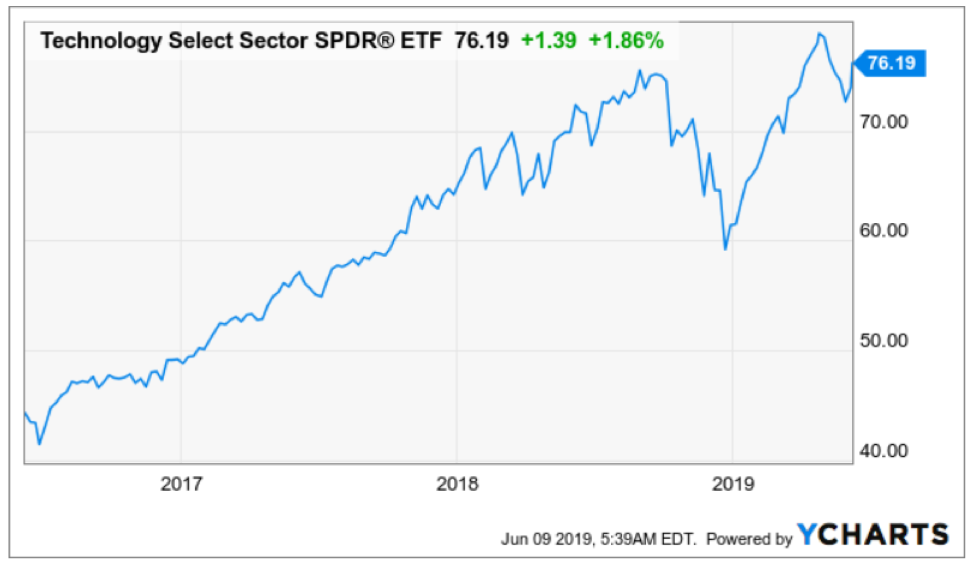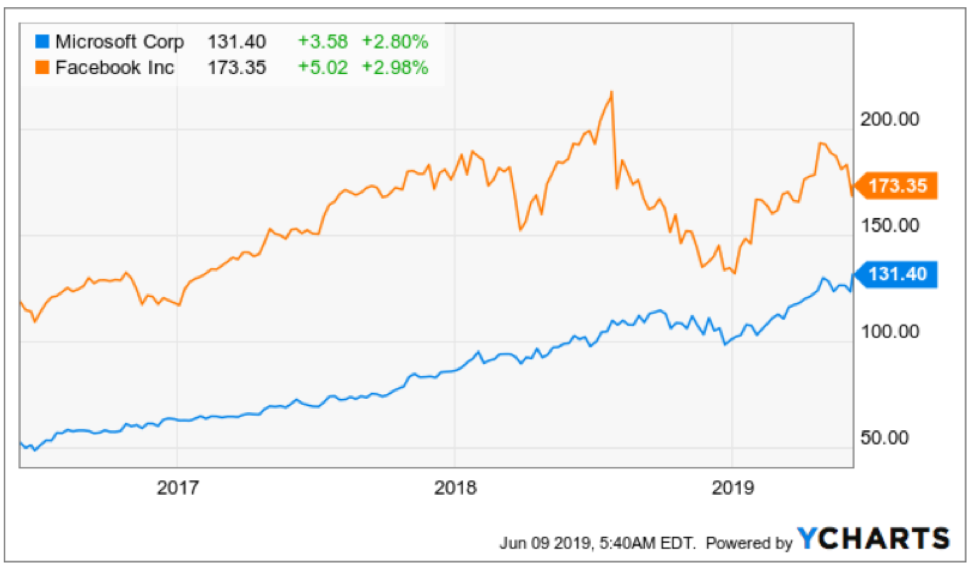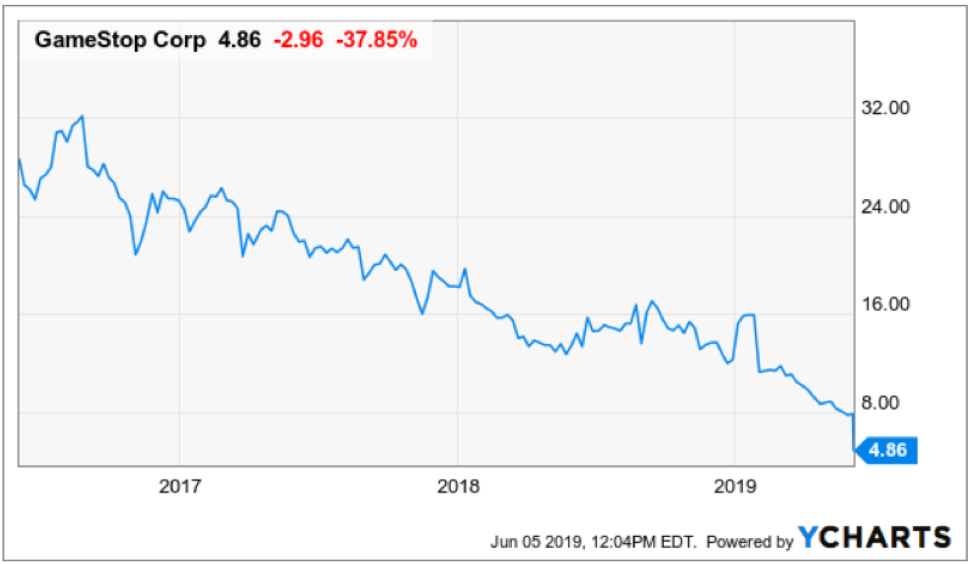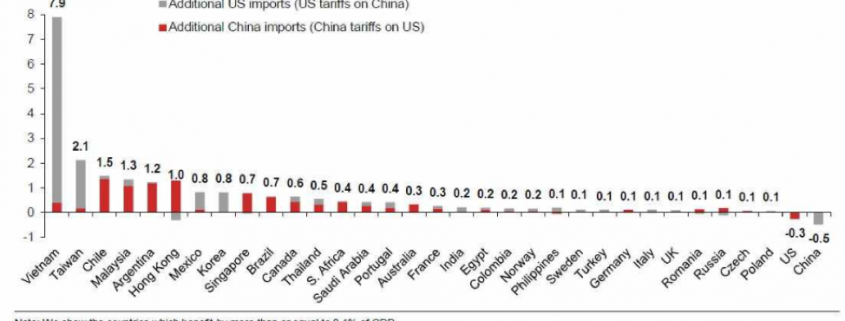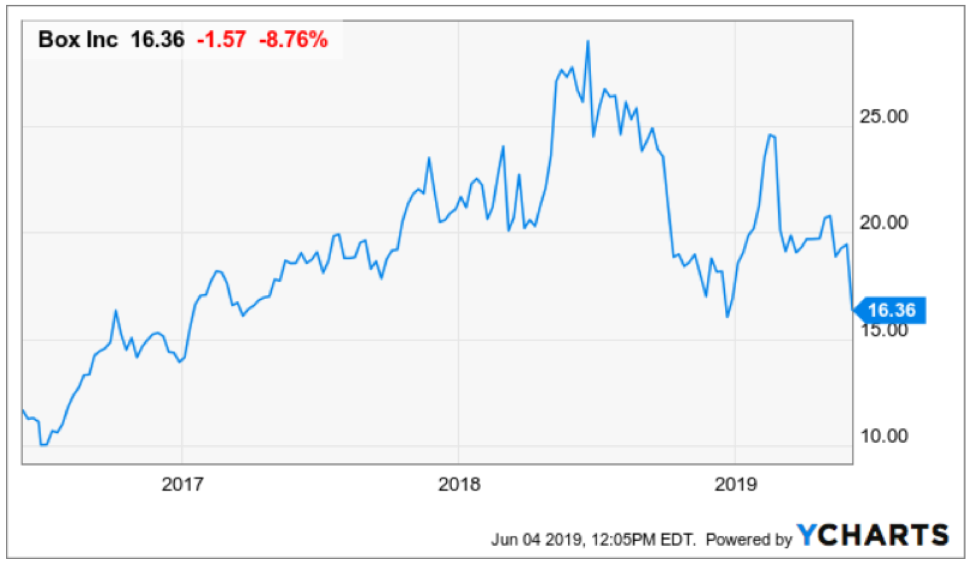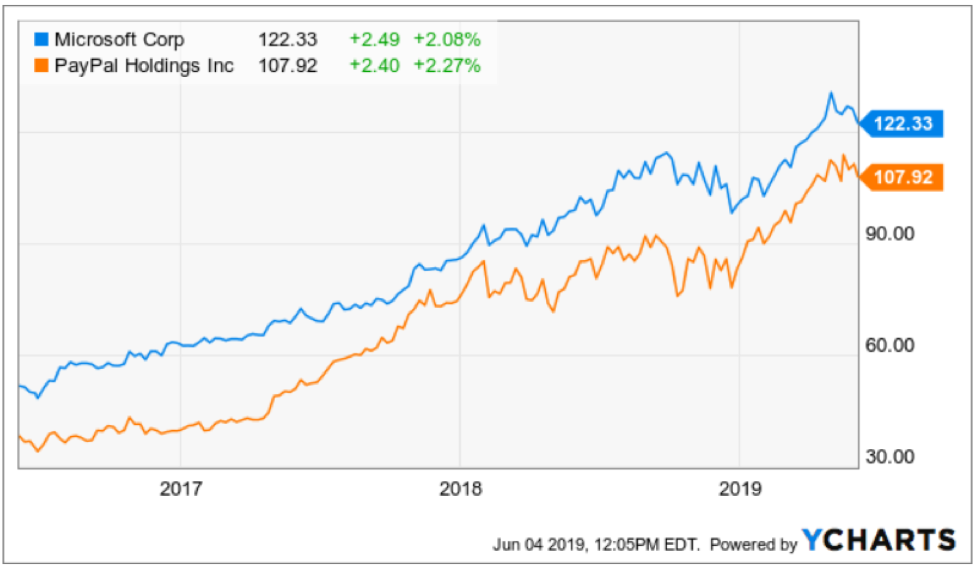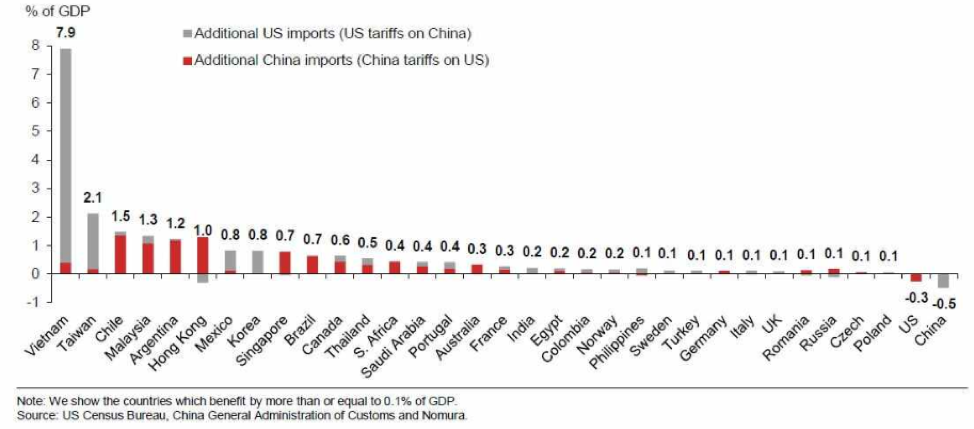“I couldn't imagine a more incompetent politician than myself.” – Said Founder and Co-CEO of Salesforce Marc Benioff
Mad Hedge Technology Letter
June 10, 2019
Fiat Lux
Featured Trade:
(WILL REGULATION KILL TECHNOLOGY?)
(FB), (MSFT), (GOOGL)
The Technology Hunger Games of 2019 is best viewed through the lens up top - the 30,000-foot view will offer insight into how the cookie will crumble.
Understanding the mechanisms which will either stop the Silicon Valley tech renaissance in its wake or deliver a supercharged boost to this sector is essential to dissecting the U.S. economy moving forward.
Silicon Valley has experienced a sensational generation by any yardstick and sometimes that is lost in the fog of war with the 24-hour news cycle hellbent on stealing the mojo of the tech industry.
Do or die regulation is shaping up to be the most critical acid test in the tech industry since the creation of the internet.
How will big American tech firms adjust to this new normal of government intervention forcing them to meaningfully alter their DNA?
Is a paradigm shift in store for the relationship that is the consumer and a tech company?
The American economy is probably the closest thing that can be passed off as unfettered capitalism.
This type of capitalism is predicated on scarce regulation which is an important part of the underlying theory.
With thin regulation, “animal spirits” can mushroom industries and its underlying companies to superstardom, we have seen this over and over again with companies like Google and Facebook.
On the flip side, we have austerity and economic vigilance.
Just to take a look around the globe and you will understand what I mean.
Germany is the economic gem of Europe and its namesake union motoring the 28-country block as the mainstay hub of innovation and value creation in the region.
But that does not mean they condone unfettered capitalism.
This is the same government that buttressed the call for austerity for the Greek and Italian government when these two entered uncontrollable debt cycles.
Deutsche Wohnen SE fell 8.7% in Frankfurt, while Vonovia SE dropped 5.5% whom are Germany’s largest residential landlords.
I thought buy to let was a guaranteed cash cow? What happened?
Germany’s largest residential landlords publicly traded shares cratered on the anxiety that Berlin will enact a rent freeze for the next five years in reaction to a surge in rental prices.
Deutsche Wohnen who owns 112,000 units is fighting fiercely to overturn this piece of legislation as they are the main recipient or culprits of the housing renaissance causing residential property opportunities or challenges to explode in the artsy Germany city.
Although residential property income is hardly connected to the fortunes of global technology, the regulation sets the tone for other pieces of the economy as a whole.
Take a quick rundown of other European nation states and the red tape is slapped around in abundance.
The end result is that Europe, even with German ingenuity, has been unable to deliver a tech company that can look the Silicon Valley FANGs in the eye and regulation is a big reason why.
Europe is essentially America with no tech companies because of it.
If you want to shovel through the recycling to pick up a name or two, then Swedish-based Spotify, the music streaming platform, would be apt and on the chips side, ARM Holdings, a British semiconductor company with many of its chips installed inside of Android systems.
These names are few and far between.
ARM Holdings was acquired by Softbank for $23 billion in 2016, a bargain buy at 2019 standards.
While America has privatized away many industries, take a look at other countries like China, who are propping up zombie banks and other state-owned companies accumulating more junk-graded debt.
I would argue that centrally planned economies like China and North Korea possess governments who get in the way of their economy more often than not to maintain strict control over its populace.
This is why private businesses often get the shaft of the top-down way of governing which hurts the free or not so free markets.
The biggest event in tech in the next 2 years will be if the big tech giants break up or not because of anti-trust tinged worries.
Microsoft’s regulatory mess was the last time the American government rolled up their sleeves and intervened this boldly into the tech sector and the functioning of it.
Remember that Microsoft missed search.
They allowed Google and then Facebook to launch and now we are back at the anti-trust table figuring out again if a reset is necessary or not.
This happened to Microsoft because they were scared to go into that part of tech for fear of more anti-trust scrutiny.
If the government does pound Silicon Valley with harsh anti-trust rulings, these big platforms won’t be able to lean on its richer parent companies to bail them out since they will be separate.
I believe that if Google, Apple, and Amazon are cut apart and set free into the world, it will incite another technological renaissance for another thirty years.
Competition mixed with free markets has a funny way of working itself out.
As I see it, these monstrous platforms are stifling innovation now and choking off smaller companies in the incubation stage that could become the next Google.
Releveling the playing field will spur economic innovation, improve technological techniques, boost job creation, and deliver even better customer experience and prices to the consumer.
Another development which is just as interesting is the market for big data.
Data could be rerouted from the proprietary black boxes of Google and Facebook and into a public market that puts a price on data.
If big data ever became a commodity sold from a market, it would mean that the accuracy of data would improve, and companies would be able to produce better products.
As it stands, big companies receive free data by the gimmick of giving away free services, these companies, in turn, manipulate and slice up the data any way they see fit to monetize.
I believe that the ad marketplace for Facebook and Google is somewhat of a broken and disconnected experience with many third-party companies questioning if it is a black hole that ad budgets are disappearing into.
The digital ad industry will undergo a serious facelift because of government regulation.
If big tech is divvied up, there will be winner and losers.
Not every tech company will survive the breakup because not every tech company is created equal.
A new type of digital marketplace will be formed once again allowing small business to bypass Facebook creating another tsunami of wealth creation.
If the FANGs aren’t broken up, then expect unfettered capitalism to go unperturbed, albeit with slow to moderate growth, instead of the renaissance I mentioned above.
Incremental gains cannot supplant wholesale enhancements.
This all means that your only choice is to own technology stocks in both scenarios – particularly the best of breed with the most cutting-edge technology.
The only way to suppress tech shares in the long run is if the American economy decides to socialize or nationalize big swaths of the private economy.
Let’s hope Washington doesn’t kill the goose that lays the golden eggs.
“I want to put a ding in the universe.” – Said Co-Founder and Former CEO of Apple Steve Jobs
Mad Hedge Technology Letter
June 6, 2019
Fiat Lux
Featured Trade:
(THE SHAKEOUT IN GAME STOCKS)
(GME), (MSFT), (GOOGL), (APPL), (STX), (WDC)
Do not invest in any video game stocks that don’t make video games.
If you want to simplify today’s newsletter down to the nuts and bolts, then there you go.
The company that I have been pounding on the table for readers to sell on rallies has convincingly proven my forecast right yet again with GameStop (GME) capitulating 35%.
It’s difficult to find a tech company with a strategic model that is worse than GameStop’s, and my call to short this stock has been vindicated.
Other competitors that vie for awful tech business models would be in the hard disk drive (HDD) market, and that is why I have been ushering readers to spurn Western Digital (WDC) and Seagate Technology (STX).
This is a time when everybody and their grandmother are ditching hard drives and migrating to the cloud, while GameStop is a video game retailer who is set up in malls that add zero value to the consumer.
This also dovetails nicely with my premise that broker technology or in this case retail brokers of physical video games are a weak business to be in when kids are downloading video game straight from their broadband via the cloud and don’t need to go into the store anymore.
Let’s analyze why GameStop dropped 35%.
The rapid migration of the digital economy does not have room to accompany GameStop’s model of retail video game stores anymore.
It’s a 1990 business in 2019 – only twenty years too late.
This model is being attacked from all fronts - a live sinking ship with no life vests on board.
GameStop was already confronted with a harsh reality and pigeonholed into one of a handful of companies in need of a turnaround.
This isn’t new in the technology sector as many legacy firms have had to reinvent themselves to spruce up a stale business model.
The earnings call was peppered with buzz words such as “transformation” and “strategic vision.”
And when the Chief Operating Officer Rob Lloyd detailed the prior quarter’s results, it was nothing short of a stinker.
Total quarterly revenue dropped 13.3% in Q1 2019 which was down from the prior year of 10.3%.
The headline number did nothing to assuage investors that the ship is turning around, it appears as if the boat is still drifting in reverse.
Diving into the segments, underperformance is an accurate way to capture the current state of GameStop with hardware sales down 35%, software sales down 4.3% and selling pre-owned products declining 20.3%.
Poor software sales were blamed on weaker new title launches this year and comping the strong data war launched last year with increasing digital adoption.
The awful hardware sales were pinned on the late stages of the current generation PS4 and Xbox One cycle with GameStop awaiting an official launch date announcement from Sony and Microsoft for their new console products.
Pre-owned business fell off a cliff reflecting tepid software demand for physical games and the increasing popularity of the various digitally offered products via alternative channels.
The only part of GameStop going in the right direction is the collectibles business that increased 10.5% from last year but makes up only a minor part of the overall business.
Management has elected to remove the dividend completely to freshen up the balance sheet slamming the company as a whole with a black eye and giving investors even less reason to hold the stock.
Indirectly, this is a confession that cash might be a problem in the medium-term.
The move to put the kibosh on rewarding shareholders will save the company over $150 million, but the ugly sell-off means that investors are leaving in droves as this past quarter could be the straw that broke the camel’s back.
They plan to use some of these funds to pay down debt, and GameStop is still confronted by a lack of transformative initiatives that could breathe life back into this legacy gaming company.
It was only in 2016 when the company was profitable earning over $400 million.
Profits have steadily eroded over time with the company now losing around $700 million per year.
Management offered annual guidance which was also hit by the ugly stick projecting annual sales to decline between 5-10%.
GameStop is on a fast track to irrelevancy.
If you were awaiting some blockbuster announcements that could offer a certain degree of respite going forward, well, the tone was disappointing not offering investors much to dig their teeth into.
Remember that GameStop is now on a collision course with the FANGs who have pivoted into the video game diaspora.
GameStop will see zero revenue from this development and a boatload of fresh competition.
Microsoft (MSFT) has been a mainstay with its Xbox business, but Apple (AAPL) and Google are close to entering the market.
Google (GOOGL) plans to leverage YouTube and install gaming directly on Google Chrome with this platform acting as a new gaming channel.
The new gaming models have transformed the industry into freemium games with in-game upselling of in-game items, the main method of capturing revenue.
The liveliest example of this new phenomenon is the battle royale game Fortnite.
Nowhere in this business model includes revenue for GameStop highlighting the ease at which game studios and console makers are bypassing this retailer.
In this new gaming world, I cannot comprehend how GameStop will be able to stay afloat.
Unfortunately, the move down has been priced in and at $5, the risk-reward to the downside is not worth shorting the company now.
The company is the poster boy for technological disruption cast in a negative light and the risks of not evolving with the current times.
BYPASSING THE RETAILER THANKS TO THE CLOUD
“I even went to KFC when it came to my city. Twenty-four people went for the job. Twenty-three were accepted.” – Founder and Former CEO of Alibaba Jack Ma when asked about life after university.
Mad Hedge Technology Letter
June 5, 2019
Fiat Lux
Featured Trade:
(BOX TAKES A HIT)
(BOX), (MSFT), (PYPL)
REVENUE DOWNGRADES – these are meaningful side effects that many public tech companies are grappling with.
To really understand the complete picture of the technology industry, analyzing the fringes goes a long way to telling us the level of health of firms operating in the face of a mammoth trade war.
Before companies start posting decelerating revenue numbers, the warnings and preannouncements come thick and fast.
That is exactly what we have been receiving as of late.
Redwood City-based cloud storage company Box (BOX) nosedived 14 percent at today’s opening after beating financial estimates but offering investors light guidance that fell short of expectations.
In fact, Box had a tidy quarter and its 16% YOY of revenue growth is performance that many industries would give a left arm for.
The $163 million in sales in the first quarter was a beat of about $1.6 million showing that cloud companies are still the kings of the modern economy.
Being that the stock market is forward-looking, mister market didn’t like what Box finished the call with.
Consensus had it that Box would deliver around $700 million of sales in 2019, but the company indicated that the souring climate because of the trade war made this highly unlikely and guided down to between $688 million to $692 million.
This won’t be the last downgrade if there are no resolutions in the next quarter, expect more than a handful to preannounce.
As we speak, both countries are digging their heels in, signaling to each other they are unlikely to budge.
Box is at an inflection point in their history where they are attempting to push their business model into a $1 billion per year operation.
This means chasing after corporate clients who have the scale and volume to satisfy these revenue goals.
Corporate clients usually are prone to having deep overseas supply chains and the diminishing success of these businesses will force them to think twice about partnering with firms like Box.
They might want to now but could put off the decision for a year or two.
The knock-on effect is massive with many areas of the expense puzzle shaved off here and there.
Expect downgrades in the quality of their office coffee beans as well.
Ultimately, many of the second-tier tech companies are at risk of issuing an imminent profit warning or if they don’t make profits, revenue downgrades will happen in the upcoming weeks.
If you thought the dollars are vanishing into thin air, you are wrong.
They still exist but are actively being pushed around to different parts of the global economy and there is one main recipient of the flow of funds.
Since tariffs have created a situation where it is too expensive to export or import from America and China, one country, in particular, has welcomed an avalanche of new money.
Many supply chains are moving over to Vietnam as we speak.
Malaysia, Chile, and Argentina have also seen an uptick in trade flows.
And you can bet that every drop of manufacturing foreign capital right now is avoiding China like the plague until they get more clarity on trade policy or weighing up moving operations to America, so they aren’t charged a tariff for selling to Americans.
Many Chinese manufacturers are using a workaround - offshoring their business taking a cue from America in the 1990s.
Vietnam has already gained 7.9% of GDP in new businesses from Chinese and American corporations.
America is past the point of no return as many executives believe this could be a dog fight in the trenches until 2035.
Better to move now and salvage what they can.
Many experts have chimed in admitting that Vietnam is what China was 20 years ago, offering manufacturers cheap labor and growing know-how in high precision industries.
Throw into the mix that Vietnam has a huge Chinese minority population which many not only speak the local language but also can communicate in Chinese, then it seems like a natural fit to source goods from there.
It could play out quite ironically with American tech companies deploying this exact carbon copy of a strategy, and we might see Chinese and American factories and research centers standing shoulder to shoulder with one another dotted around Ho Chi Minh City and Hanoi.
Expect Vietnam to be the next to ride the economic rollercoaster that China enjoyed for 30 years.
Effectively, tech profits and other American industries have seen their margins and revenue repackaged and delivered to the Vietnamese economy.
The Chinese and American economies are in for some short-term grinding and if they can’t get along at some point, Vietnam and others will be handsomely rewarded.
Investors need to keep a watch out for the next batch of data from second tier tech companies that will offer a glimpse into the future and how this trade war is playing out.
I believe the cleanup hitters like Microsoft and PayPal still swing a heavy bat and that won’t go away for the rest of 2019, but the little guys could get bullied with some revenue resets.
“My favorite things in life don't cost any money. It's really clear that the most precious resource we all have is time.” – Said Co-Founder and Former CEO of Apple Steve Jobs
Legal Disclaimer
There is a very high degree of risk involved in trading. Past results are not indicative of future returns. MadHedgeFundTrader.com and all individuals affiliated with this site assume no responsibilities for your trading and investment results. The indicators, strategies, columns, articles and all other features are for educational purposes only and should not be construed as investment advice. Information for futures trading observations are obtained from sources believed to be reliable, but we do not warrant its completeness or accuracy, or warrant any results from the use of the information. Your use of the trading observations is entirely at your own risk and it is your sole responsibility to evaluate the accuracy, completeness and usefulness of the information. You must assess the risk of any trade with your broker and make your own independent decisions regarding any securities mentioned herein. Affiliates of MadHedgeFundTrader.com may have a position or effect transactions in the securities described herein (or options thereon) and/or otherwise employ trading strategies that may be consistent or inconsistent with the provided strategies.




